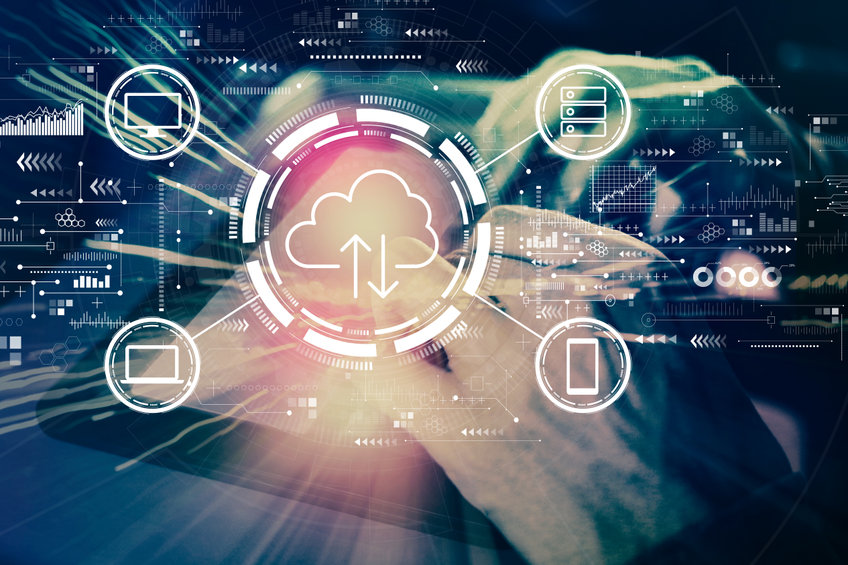More than two decades ago, life was different. Y2K was around the corner and it had just hit a chord among the global economy as businesses feared for the future of their computer systems.
It soon became clear that the 90’s had revolutionized technology to the point where society was consumed by electronic devices, automation, and machinery. The advancement in mobile phones as well as the world wide web left the global population completely dependent. It makes sense then when news of a potential crash put everyone in disarray. We weren’t prepared for unprecedented change.
Thankfully, panic didn’t last long as organizations took this uncertainty and capitalized on Enterprise Resource Planning (ERP) where they slowly began moving away from their traditional legacy programs. Fast forward to the present day, Cloud ERP has gained traction and highlighted the importance of the right technology within corporations.
So, what’s the problem?…Discovering the hidden growth factor
Throughout the years, businesses have come to discover – sometimes to their detriment – that without the right technology, they risk unprecedented decline. ERP systems like NetSuite, Microsoft Dynamics, QuickBooks, and SAP function behind the scenes as a silent partner to promote rapid growth.
From managing core processes – finance, operations, customer relations – to automating recurring operations, an ERP platform’s capacities depend on the size, needs, and challenges of a business. As organizations take on an ERP, resources once spent on manually entering data between multiple systems are scrapped to make way for more sophisticated elements.
These features are vital to the success of a business due to functions that provide scalability, operational efficiency, and versatility. These three concepts are the backbone of organic growth. Churning the mechanisms within the back end of a company’s software, employees are able to focus on their core tasks at hand, which leads to a more efficient workforce and subsequently an increased demand in products and services.
One thing that has helped companies from complications is the availability of an ERP in the Cloud. In other words, instead of having a local plug-in server, the software is run on the internet, allowing data to be accessible anywhere and anytime.
Due to its financial commitment, many have thought of an ERP as an unnecessary expense; however, if we’ve learnt anything from the past year, it’s to invest in technology. It can make or break a company.
Giant corporations, including Toyota and Starbucks, are publicly known to use an ERP system. While they’re two very different enterprises in varying industries, both have superhighways of data to manage, from employees to distribution to inventory. Without an intelligent ERP system, their success throughout the years would not be possible.
While the past two years have accelerated the need for a strategic back office, it’s nothing new. Ever since we entered into the 21st century, having a competent computerized back-end has been creeping up on the economic market.
Predicting the Outcome of a Business
Now, more than twenty years after Y2K, businesses without an ERP system in place, who were still manually inputting data into all their core systems, struggled to maintain profitability when the 2020 global pandemic shut down the economy. Once again, businesses faced unprecedented change without the proper infrastructure to be sustainable.
That being said, there is light at the end of the tunnel. We found a Montreal-based consulting company, GURUS Solutions, whose team of specialists are currently working on a product to predict patterns for businesses.
Years in the making, GURUS CEO Martin McNicoll had a goal to produce a product that would answer the big “what if” question. Imagine if managers could predict exactly when to buy winter inventory. Or entrepreneurs looking to sign up new customers, what would be the likelihood of them succeeding versus going bankrupt within the first year. Based on strategic tools like Artificial Intelligence (AI), machine learning, and key architectural programming, predicting business outcomes is possible.
While Business Intelligence (BI) has been around for decades, it’s only recently that its potential matured to a technology that provides in-depth reporting on historical, current, and future data. Its machine learning engine applies algorithms to come up with answers to questions that are pertinent to a business. Through this, the software is programmed to find patterns, leading to a predictive reporting analysis for companies.
We discovered that GURUS Business Intelligence is one of the most innovative products on the market, targeting ERP users. ERP systems, such as those mentioned above, strive on strict rules and regulations for securing data.
It’s an ideal home for business intelligence as its capabilities extend well beyond managing financial transactions. It’s also used for Customer Relationship Management (CRM), Professional Services Automation (PSA), eCommerce, inventory management, supply and demand management, wholesale distribution, and even marketing.
Nonetheless, an ERP’s multi-user access facilitates constant change as so many people are using it and modifying data for clients, opportunities, inventory, contracts, and more. GURUS Business Intelligence normalizes the data, providing a base layer where it goes into a big database (in this instance, Big Query) within Google. BI adds context to it by adding public data not normally available in an ERP system, like demographic and historical weather information. Users can then visualize the data from a different perspective.
Due to the constantly changing nature of data in an ERP, Business Intelligence provides a fast database where users have clear and concise views of data and reports. As Martin McNicoll states, “we set out to simplify complex analysis in order to help businesses make better decisions for their future.”
There was once a time when a digital life seemed an achievement well beyond our current century. Now, everything is accessible with a device the size of our hand. As businesses move toward an uncertain economic future, technology seems to be the saving grace. While an ERP programs the indispensable foundations of a business, it’s BI that will lead the team to predicting influential results.
Is it that far-fetched then to think that we could go even further and predict the outcome of an organization’s profitability?




